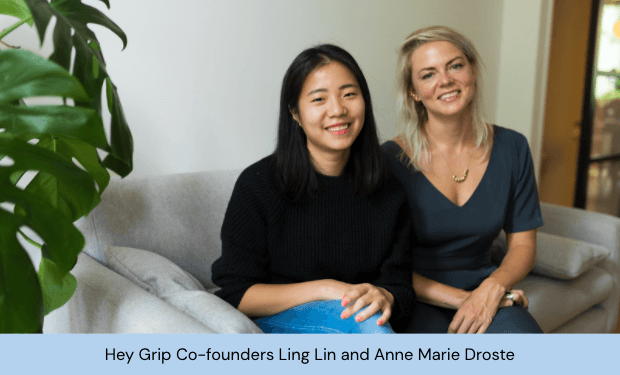Berlin’s MedTech Boom and 8 companies using tech for good
Plus 8 companies using tech for good
We've detected you're from the Netherlands, if you'd like you can view this page in Dutch!
View Dutch Stay hereWe've detected you're from Germany, if you'd like you can view this page in German!
View German Stay hereGrip Co-Founder, Ling Lin on femtech’s evolution

Unless you’re actively trying to have a child, there’s a good chance you know more about what it takes to prevent pregnancy than to conceive. Whether you’re ready for a baby or think you might like to have one someday – it’s easier than ever to get to grips with your fertility status. Gone are the days of awkward fertility clinics and spreadsheeting the hell out of your biological clock. With the rise of femtech, women’s health as we know it is rapidly transforming.
Amsterdam- founded Grip offers people with ovaries an alternative to traditional fertility clinics. This at-home hormone kit educates people with ovaries on the most common reasons why they struggle to conceive, just like fertility clinics would.
You order a testing kit off heygrip.com; prick your finger and collect 7 to 10 drops of blood; an ISO 15189 certified lab runs the blood analysis; and you receive your personal report consisting of your egg count, estimated menopause age, and risks for PCOS, blocked tubes, and thyroid issues. To learn more about their product and team, we spoke to Ling Lin, Grip’s co-founder and Chief Product Officer.

Where the magic happens: Amsterdam
Tech stack: NodeJS, React Framework, PostgreSQL, Grafana
Funding: Grip is venture-backed by investors behind companies such as Facebook, Google, Microsoft, Entrepreneur First, and Songkick
“Grip was started by Noor (31, medical doctor), Ling (33, product manager), and Anne Marie (31, investor). We believe it should be possible for you to make choices based on information about *your* body, rather than national averages. Google just isn’t good enough. Anne Marie isn’t sure she wants kids, but she’s worried she’s going to wait too long and miss out. Also, not having a period for 7 years while on Mirena made her wonder if her hormones are doing okay. Ling does want kids, but she ideally wants to build Grip first (and has to convince her boyfriend that now is the time). She has a slightly underactive thyroid so it’s always good to keep an eye on that. Noor is now Mom to Ted (4 months), but getting pregnant was harder than expected, and even as a doctor there was no support or information. We built Grip because we wanted to understand our bodies better. Now you can, too.”

“We didn’t find it difficult in attracting investors. My Co-founder Anne Marie comes from a VC background and had a good network established, and we also had a number of VCs reaching out to us directly. The challenging part is finding the VC that is aligned with what you want to build and clicks with the team.”
When you have the numbers to back up your story – it’s pretty easy to get people to invest.”

“In the first 8 months of Grip, I was the ‘unqualified’ tech person in our company as we didn’t have engineers. We used third-party tools that are available in the market to piece together our platform. Our tech team is now slowly getting formed and it’s very exciting to build the tech stack from scratch. Our engineers are currently building our backend using NodeJS, front end with React framework, and SQL as our database.”
“I am super excited to see the femtech space is getting more funding over the past couple of years – and this trend is continuing. 5-10 years from now there will be service providers for every part of the ovary journey as users go from puberty to menopause.”
Startups like Grip are creating a world where topics around female health issues are no longer surrounded by social stigma and taboo. Thanks to femtech pioneers like Ling and Anne Marie everyone can get to grips with their fertility status.
Learn more about their at-home kits here.
Subscribe to our monthly newsletter for the latest news in technology, jobs and advice from industry experts.